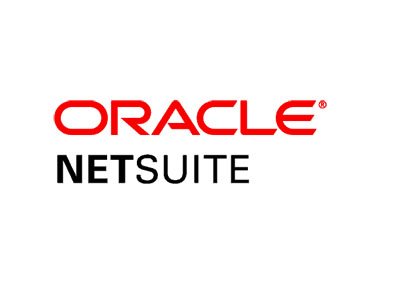Blog
NetSuite Shipping: A Guide To Transforming Shipping Efficiency For Business Leaders

Effective shipping management is a key determiner of customer satisfaction, operational efficiency, and competitive advantage. With 66% of shoppers indicating they’d choose a different retailer based on delivery options, the numbers speak for themselves. In such a fast-paced society, businesses have no choice but to cope with the technological times.
Enter NetSuite Shipping, an Oracle-owned cloud-based business management software offering exceptional shipping management tools to streamline workflows and help businesses remain ahead of the ever-moving curve. Boasting the ability to save money, boost operational efficiency, improve customer relations, and provide real-time tracking, it’s a game-changer for industry leaders.
Living up to its slogan, “Scales With Your Business,” NetSuite can transform the shipping process with coherence and cohesiveness for businesses using a wide range of shipping methods.
Understanding NetSuite Shipping
NetSuite is a complete enterprise-grade business management tool that allows owners to manage every aspect of their company in one easy-to-use cloud platform. Its core functionality lies in enterprise resource planning (ERP); however, it has added other products/extras to its offerings, including HRM, PSA, CRM, e-commerce, and more.
Put simply, it’s a software platform that manages and integrates core business processes, such as human resources, supply chain, financials, and manufacturing, for streamlined, automated workflows.
While the entire suite proves beneficial for medium and large businesses, NetSuite Shipping, a subset of the more expansive NetSuite universe, is particularly beneficial to e-commerce and retail leaders, thanks to its comprehensive function selection.
Key Features and Functionalities
This platform began the cloud revolution. As such, it packs a considerable punch, giving businesses all the tools they need for straightforward management. Disrupting the traditional status quo was the company’s aim, which achieved that.
But how did it do that? By providing various intuitive features and functionalities that make business leaders’ lives easier.
Focusing specifically on the shipping side of its offerings, NetSuite provides:
- Integration with common carriers and services like USPS, UPS, and FedEx.
- Shipping label production automation.
- Seamless order tracking and management.
- Endless customizability to ensure business owners get everything they need from the tool.
- A user-friendly interface.
- Exceptional mobile accessibility.
- Easy shipping rule setting.
- Syncing to parcel carrier shipping software via the NSWMS Print Driver.
- Advanced reporting and analytics.
- Drop shipment management and tracking.
- Methods to manage carrier relationships.
- Shipping cost tracking.
Integration with ERP Systems
Like other solutions, NetSuite Shipping integrates best with the NetSuite ERP and other branded tools. Everything in one place is vital for futureproofing businesses and their operations, so it’s unsurprising that the company has taken this route.
That said, businesses can link NetSuite Shipping accounts to other ERP systems and use all the above functionalities without migrating to another ecosystem, making the transition easier for companies with complex infrastructures.
The integration magic occurs when syncing parcel carrier shipping software (e.g., UPS WorldShip or FedEx Ship Manager) with NetSuite Shipping using the NSWMS Print Driver. This handy application automatically:
- Prints shipping labels to warehouse printers.
- Generates shipping labels for every carton packed via NetSuite WMS.
- Takes shipping data from records and pushes it to the carrier’s software.
- Takes tracking numbers from carrier’s software.
Benefits of NetSuite Shipping for Business Leaders
Business owners have much to gain from implementing NetSuite Shipping into their infrastructures. Whether they’re looking for an all-new way to save money, an opportunity to further improve operational efficiency, or increase visibility and tracking with real-time insights, their search is finally over.
While the advantages of the platform are numerous, the following outlines the top five:
#1 Cost Savings
Shipping technology isn’t a new addition to the business world. However, the actual money-saving benefits have only been highlighted in recent years, with many companies stating they wouldn’t be here without the technology. After all, it’s well-documented that optimization reduces costs and, subsequently, saves money.
Human labor is more expensive in the long term than tech. Thus, businesses turn to advanced algorithms, like those underpinning NetSuite Shipping, to do the job effectively while their staff can devote their time to revenue-gaining tasks.
Beyond that, implementing NetSuite to fulfill shipping capabilities optimizes packaging, ensuring they’re as light and cost-effective to ship as possible. Over time, the software pays for itself.
#2 Enhances Operational Efficiency
The most significant advantage of implementing NetSuite Shipping is the time savings, closely followed by the resultant efficiency improvements.
By automating label generation, seamlessly connecting to shipping carriers, and ensuring all shipments are appropriately priced. NetSuite frees up employees to focus on value-adding, specialized duties. As mentioned above, human labor is more expensive in the long run than technology. Therefore, companies should make the most of their workforce to maximize efficiency and effectiveness.
Similarly, handing time-consuming, monotonous tasks to software gives warehouse managers ample time to focus on strategy. Instead of overseeing processes, they can use their experience and in-depth industry knowledge to leverage performance data, determine trends, and make appropriate decisions much faster.
Plus, it ensures orders are dispatched in a timely fashion. These days, speed is everything. With many companies offering next-day delivery, customers increasingly demand expedited shipping without premium costs. NetSuite Shipping integrations allow businesses to provide fast shipping without increasing consumer costs and ruining relationships.
#3 Transforms Customer Experiences
Better order fulfillment brings improved customer experiences. Since data shows that 71% of consumers are unlikely to purchase from a brand again after losing trust, experience is crucial for longevity.
In the shipping world, small mistakes can have overwhelmingly significant consequences. As such, eradicating the possibility of issues via an automated, technological solution will keep customers coming back for more.
#4 Real-Time Tracking and Visibility
Inventory tracking is a crucial part of any e-commerce or retail business. Without enough stock, companies miss out on sales. With too much stock, they’re actively throwing money away. Implementing NetSuite Shipping negates these issues, allowing leaders to track inventory data automatically (and accurately) in real-time across multiple locations. Stockouts and overstocking are things of the past for companies who adopt the ideal tech.
Likewise, the platform consolidates real-time data, increasing visibility in this vital business area. Such precise, extensive information ensures that companies are equipped to forecast demand and accelerate decision-making processes.
#5 Elevates Growth Capacity
Traditionally, hiring more people was considered the primary way to fast-track growth. Yet, a Zebra report noted that 60% of businesses consider recruitment and productivity a number-one challenge, even for industry leaders.
With that in mind, it’s unsurprising that the majority consider shipping technology and infrastructure the key to unlocking expansion. Small inefficiencies within shipping processes create friction, slowing operations and leading to dissatisfied customers. NetSuite eliminates such devastation, giving companies ample room to fulfill orders as their business continues dominating the market.
Implementing NetSuite Shipping
There’s no denying that NetSuite Shipping is a comprehensive tool that allows business owners complete control over the automation of their processes. However, many ponder whether this overt comprehensiveness brings unwarranted complications during the implementation process.
Such queries are valid, but this step-by-step guide should alleviate complexity concerns.
How to Implement NetSuite Shipping
Streamlined shipping is the name of NetSuite’s game, but to accomplish this and reap the associated rewards, business owners must understand how to implement the system — from creating shipping items to sales orders to establishing rules.
The straightforward guide below ensures a seamless order fulfillment process.
#1 Make Shipping Items
Creating shipping items in the platform allows businesses to track/manage inventory and shipping costs.
- Log in to NetSuite.
- Navigate to the “Setup” menu.
- Choose “Items/Inventory.”
- Click “Shipping Items.”
- Hit “New.”
- Complete the necessary information for each item, like its name, description, and weight.
- Select the packaging type, such as a box, envelope, or pallet.
- Set the shipping cost (if applicable).
- Click “Save.”
#2 Set Shipping Methods
With the items made, set shipping methods using the following two steps:
- Select the shipping services you offer, like standard, expedited, or international.
- Set the shipping carriers and services, such as FedEx, UPS, or USPS.
#3 Configure and Integrate Shipping Rules
When configured appropriately, the rules automatically assign various shipping methods based on customer preferences, weight, destination, or value.
- From the NetSuite dashboard, head to “Shipping Rules.”
- Click “Create New Rule” to open the shipping rules configuration screen.
- Set the conditions for the rule, like destination, shipping method, and/or order value.
- When the conditions above are met, set the actions that need to be taken.
- Hit “Save” and ensure it’s activated before applying it to customer orders.
#4 Configure any Additional Integrations
Business owners should integrate other essential items such as a shopping cart with NetSuite to guarantee automatic order processing, delivery date and tracking, alongside adding their FedEx, UPS, and Endicia/USPS accounts to the system to automate shipping label generation like this:
- Head to “Setup” > “Company” > “Enable Features.”
- Select “Transactions.”
- Check the “Shipping Label Integration” box under the “Shipping & Receiving” header.
- Click “Save.”
NetSuite Shipping Best Practices
After integration, companies must consider the best practices surrounding NetSuite’s preparation and shipping process. From optimizing shipping workflows to ensuring compliance and security to maximizing ROIs, experts recommend these few essential tips and tricks:
Optimizing Shipping Workflows
Using the step-by-step guide above, business leaders can define shipping workflows that take their products from the warehouse to customers’ doors. However, best practices dictate utilizing NetSuite’s Sales Order Fulfillment Workflow to automate ship process and further streamline the order fulfillment process.
The general steps are as follows:
- Identify the process — Confirm the steps involved in completing a sales order.
- Set the trigger — Outline the conditions that start the workflow. In this case, the condition is likely “when a sales order is approved.”
- Map the steps — In other words, define the sequence of actions.
- Configure — Set up the workflow to include action steps that trigger based on the preset rules and conditions.
- Test and refine — Before publishing the flow, run extensive tests to ensure a smooth rollout.
When optimizing the shipping processes, business owners should keep the following best practices in mind:
- Optimization comes from simplicity and efficiency. Removing unnecessary steps and ensuring the process is user-friendly are vital to building an error-free shipping flow, alongside reducing delays with automated triggers and notifications.
- Review and change NetSuite Shipping workflows regularly. Companies should schedule review sessions at predetermined intervals to keep everything updated as the business changes/customers provide feedback.
- Simplify the process using NetSuite’s built-in templates. The platform boasts a plethora of built-ins to make integrating the solution much more accessible.
Ensuring Compliance and Security
NetSuite offers a variety of tools designed to enhance compliance with various regulations, as the brains behind the extensive management tool understand the severe consequences faced by businesses that fail to adhere to said regulations.
Since compliance is a non-negotiable, NetSuite’s built-in tools can be used to meet regulatory demands, particularly in sectors with rigorous rules. The primary features associated with compliance are accurate accounting solutions, allowing business owners to generate error-free financial statements to stay up-to-code.
The rise of the digital sphere has made data security an even more pressing issue. But NetSuite releases the pressure, offering various data protection methods to keep businesses, stored customer information, and finances safe from breaches, theft, and other cybersecurity threats.
Staying abreast of regulatory changes is a must-do for any company leader. Understanding the latest updates ensures owners can edit their shipping and inventory management options to remain constantly compliant.
Maximizing ROI
Business isn’t without maximizing a return on investment — and implementing NetSuite Shipping is no exception. Luckily, doing so is relatively easy; leaders need to take advantage of all the features and functions by:
- Enabling shipping label integrations to enhance pick pack and ship.
- Permitting multiple shipping routes for single orders.
- Using NetSuite’s advanced inventory management tools to plan for numerous warehouses, track precisely, and calculate critical settings.
- Fine-tuning shipping for multiple packages and combined orders.
- Providing appropriate, delivery-location-dependent parameters.
- Utilizing real-time shipping rates.
- Enhance order management, including in-store pickup options for brick-and-mortar locations.
Harnessing the power of NetSuite Shipping’s offerings is a surefire way for business owners to see a significant return on their technological upgrade.
Overcoming NetSuite Shipping Implementation Challenges
At this point, business leaders know the benefits of implementing NetSuite Shipping, how to integrate it, and best practices for utilizing it—however, more than this is needed to diminish the potential implementation challenges.
No company, regardless of size or years in business, is exempt from challenges. Any new platform takes exceptional adjustment and time to embed itself into the infrastructure properly. Understanding the common hurdles and learning to overcome them is pivotal for those adopting this transformative shipping system.
Addressing Potential Adoption Hurdles (with Solutions)
Businesses may face one, all, or none of these hurdles, but knowing how to overcome them, should they arise, is vital for seamless integration.
Some of the most common include:
| Potential Hurdle | Details | Prevention Method/Solution |
|---|---|---|
| Management and project planning | NetSuite implementation isn’t an overnight process. From planning to development to testing to support and beyond, there are multiple moving parts which increases the likelihood of being sidetracked from the original aim. | Cooperation from all departments and individuals involved in the planning. |
| Training needs | Without adequate training, employees won’t understand how to use the new system, decreasing the software’s positive impact. | Provide a solid training plan for employees. Allow employees to familiarize themselves with the platform for a few weeks before rolling in out properly. |
| Reporting | NetSuite has many data organization and retrieval tools, but some find it limited in the reporting department. | Leaders should consider whether the simple performance reports are enough. If not, other offerings integrate with NetSuite to ensure advanced reporting. |
| Change resistance | Resistance to change is the unwillingness to adapt to new ways of working, particularly new software implementations. While the reasons for this are innumerable, the crux of the matter is people are scared of the unknown. Humans are hard-wired to look for predictability, meaning uncertainty can trigger anxiety. | Leaders can use the strategies below to overcome resistance to change. |
| Continuous updates | While regular updates and improvements are beneficial, they can lead to new misunderstandings and changes to already fresh protocols. | Always communicate updates early. Provide detailed guidelines on how employees can navigate the improvements. Listen to feedback to ensure proposed enhancements have the desired effect. |
Strategies for Overcoming Resistance to Change
- Early, regular communication — Changes need to become the status quo quickly. Involving key stakeholders is a practical approach to ensure employees are engaged; they’re more likely to adapt readily when a trusted individual backs up the implementation. Whenever leaders receive new information about the upcoming change, it should be communicated to the rest of the company.
- Listen — Employee concerns matter. They’re more likely to hold the key to potential blind spots since they’ll deal with NetSuite Shipping daily. Most companies find that employees have timeline concerns. Thus, business owners should find ways to address them or properly articulate the reasoning behind the timeline to save money and time in the long term.
- Educate — Employees need to know the value of the implementation. Leaders who build a case for why the change is happening reap the smoother implementation rewards.
Businesses Have Already Found Success with NetSuite Shipping
NetSuite is the go-to ERP and shipping solution for huge brands worldwide. Some of the biggest e-commerce, logistics, and retail names have implemented the platform, finding exceptional success.
Take Sara Davies, the founder of Crafter’s Companion, for example. She stated that with NetSuite, they were able to make financially driven decisions about the potential growth and profitability within the business.
Likewise, Seaman’s Beverage and Logistics noted that NetSuite Shipping offers exceptional flexibility, allowing them to react to the constantly evolving regulatory and shipping demands. The brand utilizes the platform to report products shipped across state lines to stay aligned with regulatory demands.
The platform is trusted by over 37,000 customers who’ve used the best practices and overcame potential challenges by implementing the solutions above to create a shipping infrastructure that has catapulted them to the dizzying heights of success.
Future Trends in Shipping Technology
Shipping technology is constantly changing. Whether the increased widespread usage of AI in the industry or the likelihood of drone deliveries becoming the norm, the future of shipping tech is a varied landscape comprised of many additions.
One of the most exciting is the already-mentioned drone deliveries. They’re already shipping orders to certain regions but are expected to increase speed, providing deliveries within 30 minutes.
Customized delivery choices are predicted, too. In keeping with the boom of the customized purchase experience, businesses are set to incorporate personalized shipping, such as regular, same-day, or experience-based deliveries.
Most future trends point to ever-faster delivery times. Whether through drones or other methods, customers can expect to get what they demand — lightning-quick deliveries.
Emerging Technologies in Shipping
So, what shipping technologies are paving the way toward these trends? Aside from drones, emerging shipping tech includes:
- IoT — The Internet of Things and its inherent connectivity are becoming more prominent in the logistics industry, reducing individual workloads and helping automate time-consuming processes.
- AI — Artificial intelligence is proving its worth in the shipping technology sphere, contributing to the real-time tracking of shipments and predicting delivery times for exceptional customer experiences.
- Blockchain — Provides a secure, transparent way to track transactions, proving beneficial for managing supply changes and reducing fraud.
Will NetSuite Shipping Adapt to Future Trends?
One question remains: will NetSuite Shipping adapt to these predicted trends? And the answer is surprisingly simple — yes.
The company stays abreast of the ever-changing trends, acting as a pioneer for many to ensure their customers always receive the latest and greatest shipping technology.
The Bottom Line
NetSuite Shipping offers a supreme selection of tools to transform any business, from saving money to boosting operational efficiency to providing real-time tracking and visibility.
Upon performing the relevant integration steps and squashing the likelihood of common implementation challenges, company leaders can expect the platform to remain ahead of industry trends, contribute to business expansion, and enhance customer experience. NetSuite Shipping is the answer to longevity in an ever-competitive business world.







